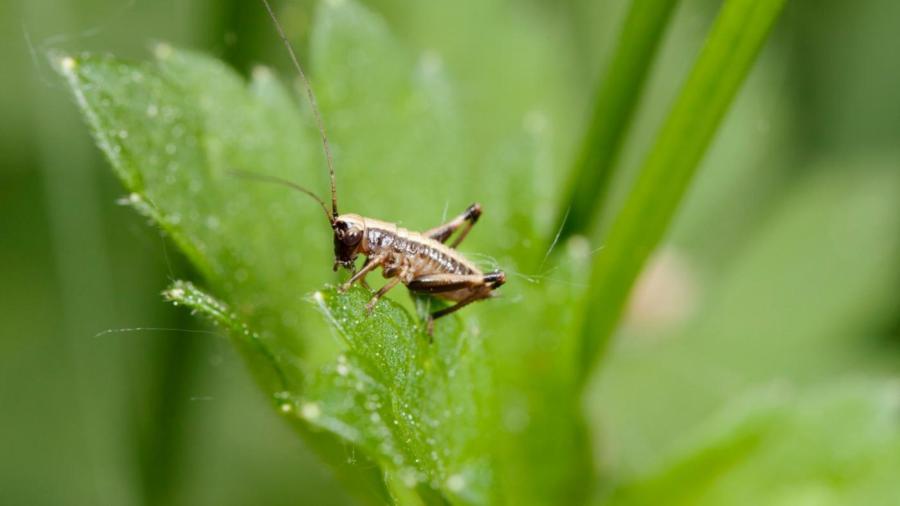What Is the Difference Between Male and Female Crickets?

One difference between male and female crickets is that male crickets have rough patches on their forewings that they scrape together to produce a chirping sound, whereas most female crickets make no sound. Another difference is that only female crickets have long thin tubes at the end of their abdomens, which they use for laying eggs.
Male crickets have a number of different chirping songs. The loud calling song attracts the females to the males. The quiet courting song convinces the female to mate, and the copulative song is sounded after mating. The aggressive fighting song, brought about by the detection of another male by chemo-receptors in the antennas, warns away other males during courtship. To create the sounds, males rub one wing on another while holding the wings up and open for amplification. The temperature of the environment affects the rate of the chirps. Both male and female crickets have special receptors in their forelegs that act as ears, enabling them to hear sounds.
After mating in late summer, crickets lay their eggs in the fall. Female crickets are able to lay eggs twice a month or more. They insert their ovipositors, or laying tubes, into soil or plant stems, often seriously damaging the plants. Cricket nymphs hatch in spring and go through 6 to 12 molts before becoming adults, after which they live only 6 to 8 weeks.





